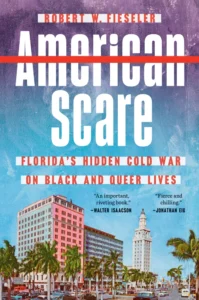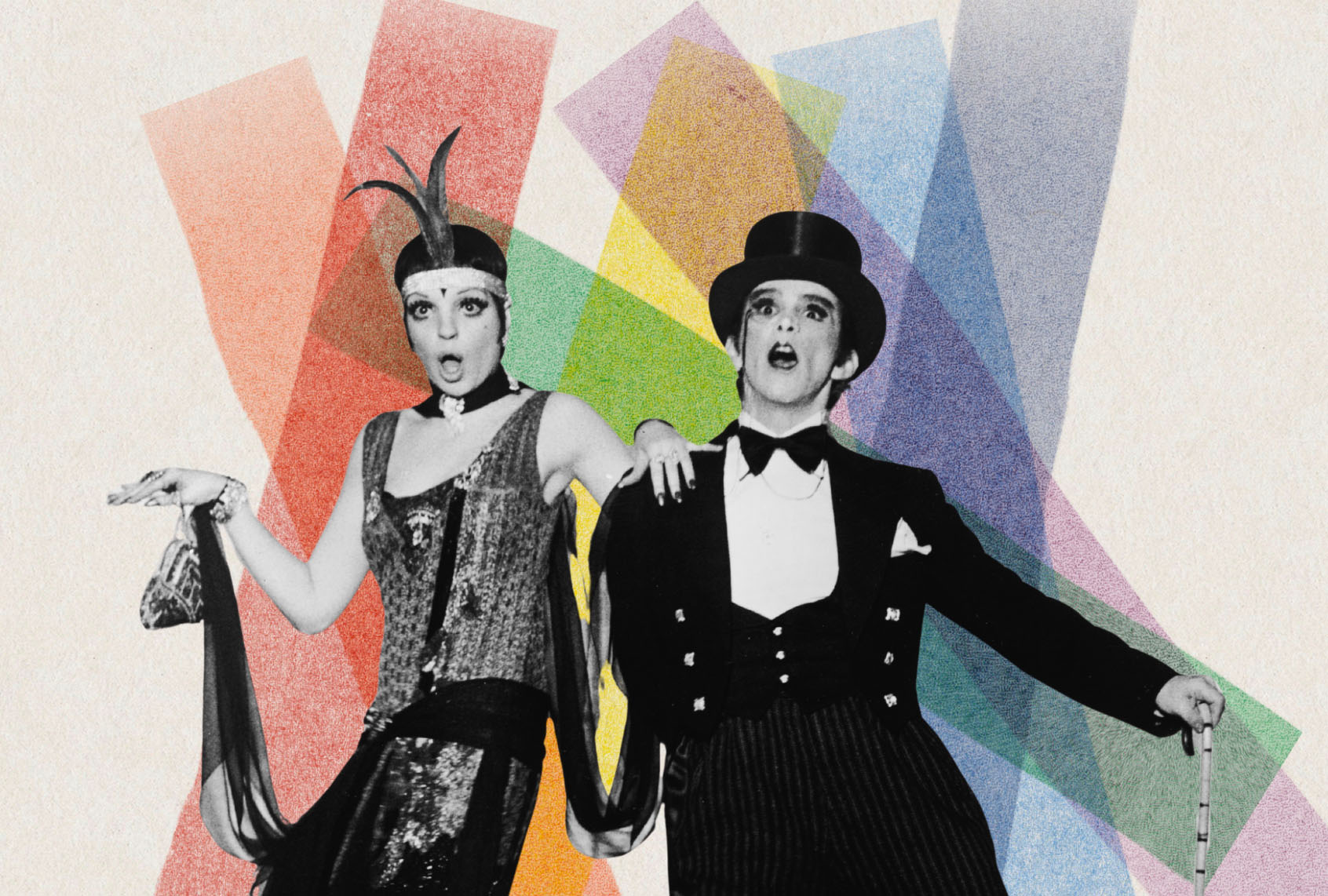Anti-queer fascism is coming around again
I recently received a journalism award that I cannot publicize—because it recognizes a profile piece I wrote about a queer businessman, and that article appeared in the pages of a federally-funded magazine. In today’s atmosphere of radical white reassertion, drawing attention to such an honor would risk the disappearance of that now award-winning story, which still lives — and educates the public — on executive branch servers.
I make this observation not for the sin of pride but to showcase how queer folk have received the message that any expression of Pride can attract the stomp. Unsanctioned speech today lives at risk of being dust-binned through powerplays. Despite any overtures about meritocracy, proponents of the white culture war stand at odds with the untamed diversity of excellence, which diminishes humdrum white achievement by making normie mediocrity feel second-rate or, even worse, “uncomfortable,” to reference Florida’s Stop WOKE Act.
The fun-times canvas of our culture is being reconceived through queer erasure. Shedding allies, the LGBTQ+ coalition teeters on the tail of this recent Quiet Pride, with public institutions that have been loudly supportive in the recent past intimidated into whispers, or all-out silence.
The fun-times canvas of our culture is being reconceived through queer erasure. Shedding allies, the LGBTQ+ coalition teeters on the tail of this recent Quiet Pride, with public institutions that have been loudly supportive in the recent past intimidated into whispers, or all-out silence. This tectonic shift signals not a new betrayal of queer folk but a reinforcement of the fundamental relationship between Western society and non-hetero life — a hot/cold union of creative thrill-seeking and fair-weather fascination that can best be captured by a single image from Bob Fosse’s 1972 musical film “Cabaret.”
This may seem like esoterica — but hold on, queen.
For the uninitiated, “Cabaret” begins with a marionette-like male character named the Emcee, the omnipresent master of ceremonies of an underground Kit Kat Club in 1931 Berlin, smiling into a warped mirror. The Emcee’s funhouse reflection signifies not only how straight culture ogles the novelty of a newly surfaced queer society in Weimar Berlin but also how that queer community ogles at the novelty of itself. Through the mirror’s warp, this mutual curiosity between the viewer and the viewed is mediated by refractions, glimmers and illusions. Straights and queers, in other words, never get a clear view of each other through a flat lens. All perceive “through a glass darkly,” to reference the King James Bible so often quoted by effete British visitors to the Weimar, such as gay author Christopher Isherwood, whose novel “Goodbye to Berlin” provided the source material for “Cabaret.”
The camera zooms outward with the Emcee from the mirror into a bustling cabaret scene featuring sexually subversive drag performers in classic Fosse garb of bustiers, bowler hats, fishnet stockings, curlicue canes and heels on heels on heels, not to mention Liza Minnelli in an Oscar-winning turn as “international woman”/flapper seductress Sally Bowles. “Welcome, stranger,” the Emcee bids in three languages to his crowd, signaling how any nightlife scene is built on welcoming they who are a stranger and that which is stranger than the norm into its ample bosom. Delighting in the performance and applauding from the floor pit are gender-bending members of the new bohemia, alongside champagne-sipping deputies in tuxedos of the Berlin elite. “Leave your troubles outside,” the Emcee implores the sundry spectators.
This is a showbiz universe where concern is suspended. The whole point of “Cabaret” is to take audiences on a romp through a bygone Berlin so out of control that it feels inexorably doomed, even given any preconceived knowledge of Adolf Hitler’s rise as chancellor in January 1933.
Fosse’s cinematic journey ends with the camera peering into the same warped mirror at the cabaret club, only this time the reflection reveals Nazi officers are now seated conspicuously in the club’s front rows — and are poised to clobber the subversive performers and permanently close the show. The narrative shift between the Emcee’s opening grin and the terminating focus on a Nazi swastika, all in the same glass, begs questions of not just the Weimar Republic, but also of Western queer existence: Is it all just a cabaret between clampdowns? Is queer humanity just a transitory circus in years of flourishing and a graveyard in years of shriveling?
What dominant culture, from Pax Romana to Salem, Massachusetts, to 1960s Red Scare Florida, has not displayed a sine wave in its relationship to the non-heteronormative: Hidden, then semi-tolerated, then celebrated, then persecuted, then hidden, then rinse and repeat, ad infinitum? Weimar Berlin, for example, boasted a prominent gay magazine called Die Insel with a circulation of 150,000 until the magazine closed and the writers were sent to camps. Guess when? March 1933, the moment of Nazi clampdown. Then in 1961, 16 years after the Third Reich was batted back to the darkest corners of our world, gay icon Judy Garland herself — the mother of Liza Minnelli — traveled to Berlin for the premiere of “Judgment at Nuremberg,” a film about the prosecution of Nazi war criminals in which she had a featured role. Her arrival made it clear: The cabaret was back!
Now, after 60 or so years of LGBTQ+ activism in the United States, straight-presenting white gay citizens who marry have gotten a taste of middle-class assimilation. But is our little fiesta headed towards another terminus? Few queer generations in human history have ever been born, lived and died with the same set of rights. Why would that dynamic suddenly amend itself for America’s sake?
What’s unfolding before our eyes will eventually tell us if we are living at the beginning of another clampdown or a mere hiccup in a prolonged cabaret. Realistically, from a human-power perspective, all a queer minority can do in the face of a majority tidal shift is bravely let the show go on until someone burns down the theatre. As Viktor Frankl once wrote, “You cannot control what happens to you. What you can control is what to do with what happens to you.” Inspired survivors might even emerge from the rubble years later to mock-perform their executions as drag.
Mark me: In the bombed-out hovels of West Berlin, there was a first drag show to hail the city’s resurrection. There was. There had to be. Everything about the cloddish goose-steppers who continue to kill history’s cabarets is inferior to the divine choreography of a Fosse troupe, but such excellence has never been able to thwart outright a triumph of the will.
Want more sharp takes on politics? Sign up for our free newsletter, Standing Room Only, written by Amanda Marcotte, now also a weekly show on YouTube or wherever you get your podcasts.
Given any knowledge of queer history, it’s rational to ask if U.S. institutions buckling under administrative pressure have had their fill of America’s queer cabaret in the early 21st century, just as bon vivant members of 1931 Berlin allowed themselves to revel in a bit of queer fun before abandoning their avant-garde friends to the political headwinds and willfully ignoring several genocides in their own backyards. For this, I defer to the final scene of “Cabaret.”
Fosse never visually depicts or provides audio documentation of the Nazis breaking up his enchanted Kit Kat Club, though the jackbooted men sitting in front rows at the final performance assuredly do so in the millisecond after the film fades to black. Instead, Fosse features the Emcee line-by-line re-reciting his opening speech before giving a final “Goodbye” and bowing swiftly to make a light escape out a side door. The omnipresent Emcee, a queer Jack Be Nimble, can’t be dragged to the camps because he is a thematic stage presence, more a spirit than a depicted personage with a before/during/after narrative governed by reality. He therefore gets away with everything.
In musical numbers throughout the film, the Emcee gleefully depicts adultery, profligacy and polyamory, and even satirizes Hitler’s mustache without consequences, while seemingly every other Berlin eccentric is getting a nightstick to the cranium for uttering a cross word to a brownshirt. Fosse suggests, through the Emcee, that though the West’s relationship to queerness may bear the pattern of a sine wave, the Grande Human Cabaret can never metaphorically or spiritually close. A mirror, even a warped mirror in a Berlin club, doesn’t lie when it reveals a queer face as a human one.
 Queerness is an indelible feature of our species, Fosse indicates through his visual device. We’ve existed in one refraction or another in every civilization that has left a written record. As I conclude in my latest book “American Scare: Florida’s Hidden Cold War on Black and Queer Lives,” referencing Judy Garland in “The Wizard of Oz,” “There are friends of Dorothy in any system.”
Queerness is an indelible feature of our species, Fosse indicates through his visual device. We’ve existed in one refraction or another in every civilization that has left a written record. As I conclude in my latest book “American Scare: Florida’s Hidden Cold War on Black and Queer Lives,” referencing Judy Garland in “The Wizard of Oz,” “There are friends of Dorothy in any system.”
Queer folk have been woven into the image of humanity because they augment families (see guncles), strengthen societies (see Alan Turing) and elevate the body politic (see Benjamin Disraeli). Queer irony acts as a pre-programmed check on tyrants for the common well-being. Just as court jesters during the Spanish Inquisition mocked drunken bishops, just as the survivors of the 1937 Ku Klux Klan invasion of the Miami gay bar La Paloma shot it back as a Klan drag performance, just as Manhattan gays transmogrified the homophobic beatdowns of the 1972 Hardhat Riot into the Village People, humanity’s Queer Cabaret will endure to critique the violence of despotism, especially one-dimensional portrayals of gender that reduce the tapestry of creation to puffery.
For more proof of our necessity, look at the disasters that befall any community that deigns to cut out its queer eye. Try to listen seriously to former U.S. Attorney General John Ashcroft’s 2002 music single “Let the Eagle Soar.” I dare you — there was not a gay man in the production studio. Google Kellyanne Conway’s dress at Trump’s 2017 presidential inauguration. Do it once, but make sure to sit beside a wastebasket. Consider every masterpiece play not written by Oscar Wilde in Victorian England, an era when more theatres were being constructed in London than anywhere before in human history. Examine the visual atrocity of Nazi architecture.
That is what happens to societies when you kill all of your gay friends.
Fascists are doomed to failure because queerness cannot be eradicated, despite any Quiet Pride or clampdown effort, unless you wipe out humanity itself. A percentage of babies born every day will manifest queer characteristics, and though countless strongmen have left fields of carnage in attempts to manage so-called bloodlines, nobody can override such DNA destiny. In our American experiment, queerness has clearly offered “We, the People” some exponential benefit of stick-to-it-ness, multiplicity of skill and wit in the struggle, as our society has withstood several true tests to soar higher than Charlemagne without imprisoning the satirists or waterboarding the joketellers.
A few final words to those ex-allies lingering at the back of the house: Enjoy the cabaret while it persists. Because such excellence (wherever it lives) breathes in the heyday of a social miracle. You’re welcome, b*****s. As the Emcee assures in his opening and closing words, “So, life is disappointing? Forget it! In here, life is beautiful. The girls are beautiful. Even the orchestra is beautiful.”
Americans do love their fun times and their clever quips, but the entertainment goes (usually out the side door) when and where queers do.
Read more
about this topic

